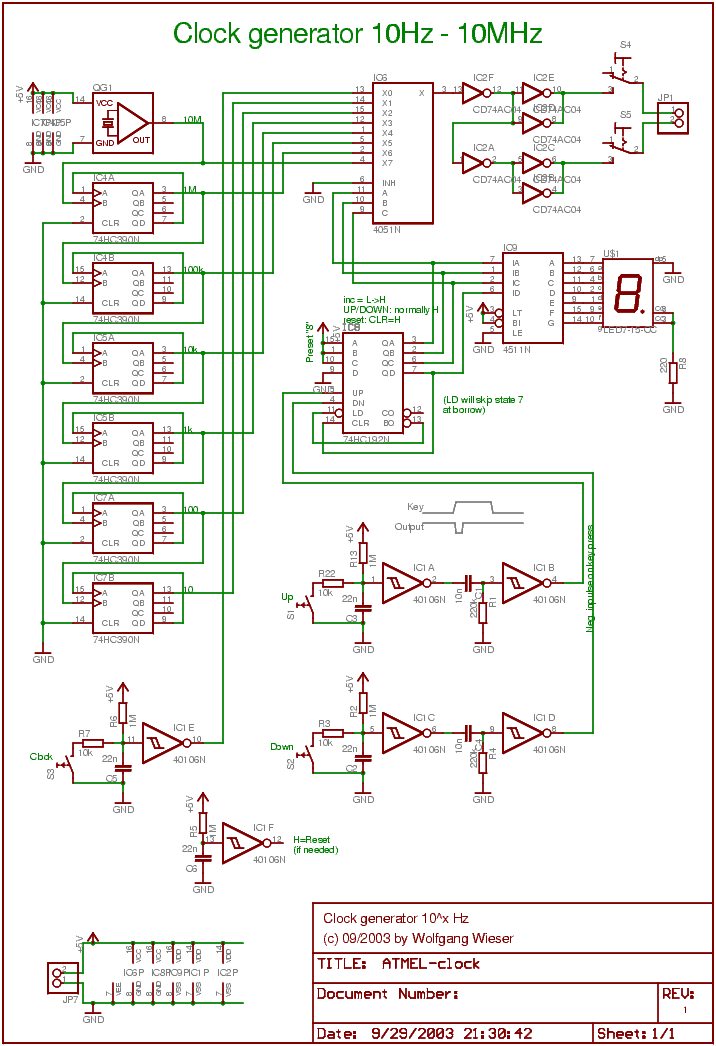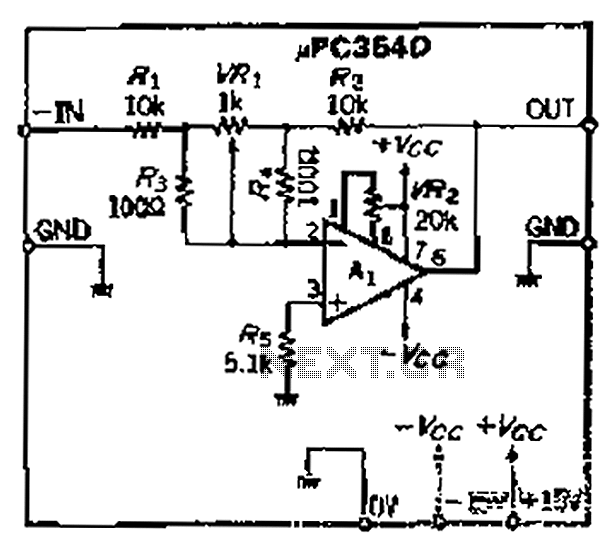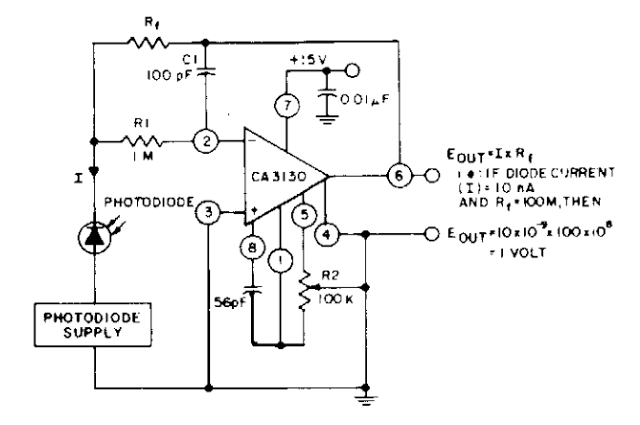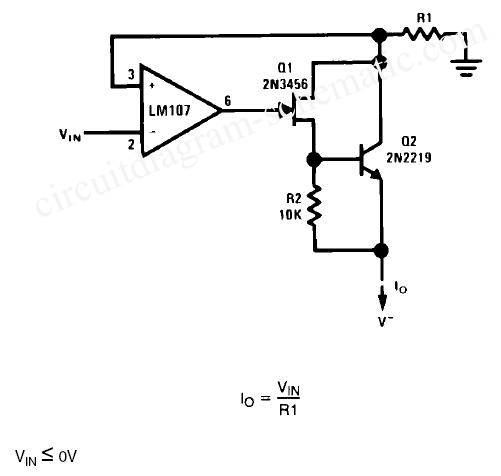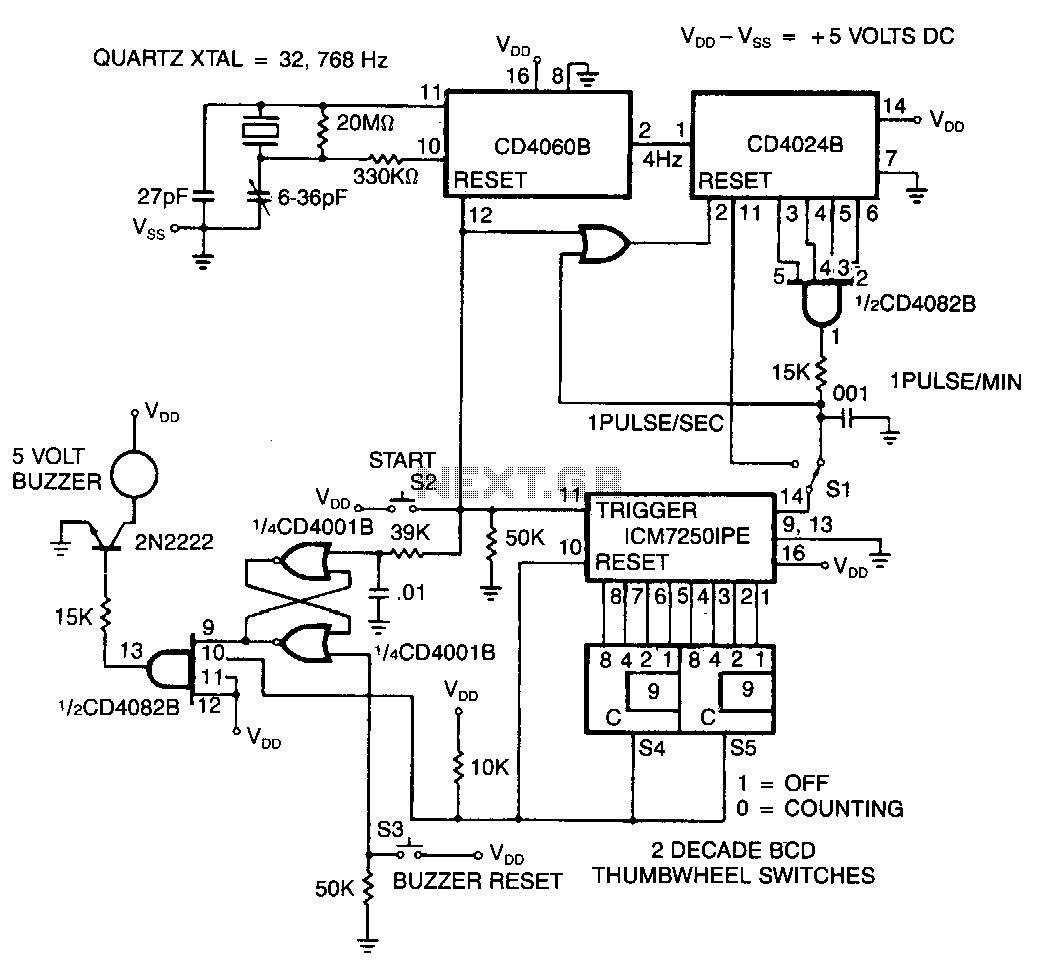
Precision photodiode comparator
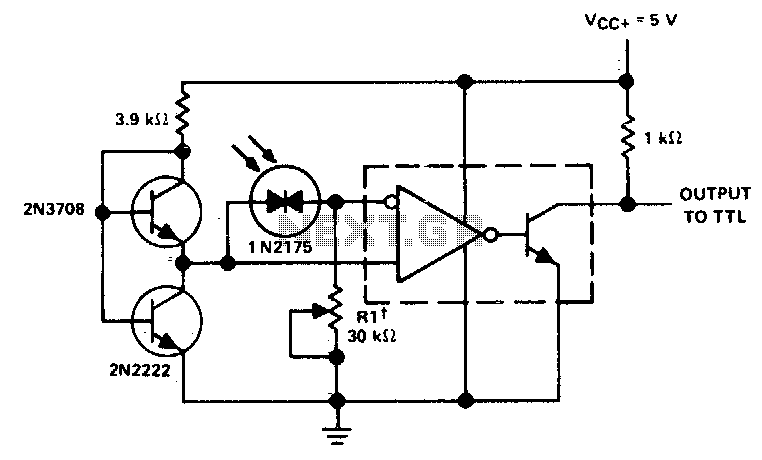
Rl sets the comparison level. At comparison, the photodiode has less than 5 mV across it, decreasing dark current by an order of magnitude. More: IC = LM 111/211/311.
In this circuit description, the resistor Rl plays a crucial role in establishing the comparison threshold for the photodiode's output. The photodiode, when properly biased, operates in a mode where it generates a minimal voltage drop of less than 5 mV. This low voltage across the photodiode is significant because it indicates that the dark current—the small amount of current that flows through the photodiode even in the absence of light—is reduced by a factor of ten. This reduction in dark current is essential for improving the signal-to-noise ratio in applications where precise light detection is required.
The integrated circuit (IC) specified, either LM 111, LM 211, or LM 311, serves as a voltage comparator that is designed to compare the voltage across the photodiode with a reference voltage. The choice of IC allows for flexibility in application, as these models are capable of handling a variety of input voltages and provide reliable output signals. The output of the comparator can be used to trigger further actions in a circuit, such as activating an alarm, turning on a light, or sending a signal to a microcontroller for processing.
The configuration of Rl, along with the photodiode and the selected IC, forms a critical part of the overall circuit design, ensuring that the system operates effectively under varying light conditions. Proper selection of Rl value is essential, as it directly influences the sensitivity and response time of the photodiode circuit. A well-designed circuit will minimize false positives caused by noise while ensuring that legitimate signals are detected accurately.Rl sets the comparison level. At comparison, the photodiode has less than 5 mV across it, decreasing dark current by an order of magnitude IC = LM 111/211/311.
In this circuit description, the resistor Rl plays a crucial role in establishing the comparison threshold for the photodiode's output. The photodiode, when properly biased, operates in a mode where it generates a minimal voltage drop of less than 5 mV. This low voltage across the photodiode is significant because it indicates that the dark current—the small amount of current that flows through the photodiode even in the absence of light—is reduced by a factor of ten. This reduction in dark current is essential for improving the signal-to-noise ratio in applications where precise light detection is required.
The integrated circuit (IC) specified, either LM 111, LM 211, or LM 311, serves as a voltage comparator that is designed to compare the voltage across the photodiode with a reference voltage. The choice of IC allows for flexibility in application, as these models are capable of handling a variety of input voltages and provide reliable output signals. The output of the comparator can be used to trigger further actions in a circuit, such as activating an alarm, turning on a light, or sending a signal to a microcontroller for processing.
The configuration of Rl, along with the photodiode and the selected IC, forms a critical part of the overall circuit design, ensuring that the system operates effectively under varying light conditions. Proper selection of Rl value is essential, as it directly influences the sensitivity and response time of the photodiode circuit. A well-designed circuit will minimize false positives caused by noise while ensuring that legitimate signals are detected accurately.Rl sets the comparison level. At comparison, the photodiode has less than 5 mV across it, decreasing dark current by an order of magnitude IC = LM 111/211/311.
